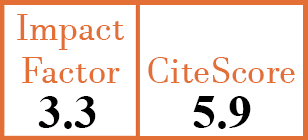Full Papers
Efficacy and glucocorticoid sparing of dupilumab in IgG4-related disease: a case series and literature review
F. Finet1, L. Sesé2, S. Abad3, O. Walter4, C. Raherison-Semjen5, A. Aouba6, M. Trenec7, A. Deroux8, N. Schleinitz9, B. Terrier10, R. Dhôte11
- Department of Internal Medicine, CHU Avicenne AP-HP, Bobigny, France. flora.finet@aphp.fr
- Department of Pneumonology, CHU Avicenne AP-HP, Bobigny, France.
- Department of Internal Medicine, CHU Avicenne AP-HP, Bobigny, France.
- Department of Internal Medicine, CHU de Toulouse, France.
- Department of Pneumonology, CHU de Guadeloupe, Pointe à Pitre, France.
- Department of Internal Medicine, CHU de Caen Normandie, Caen, France.
- Department of Internal Medicine, CHU de Caen Normandie, Caen, France.
- Department of Internal Medicine, CHU Grenoble-Alpes, Grenoble, France.
- Department of Internal Medicine, CHU de La Timone, Université Aix-Marseille, France.
- Department of Internal Medicine, CHU Cochin AP-HP, Paris, France.
- Department of Internal Medicine, CHU Avicenne AP-HP, Bobigny, France.
CER18394
2025 Vol.43, N°9
PI 1661, PF 1666
Full Papers
Free to view
(click on article PDF icon to read the article)
PMID: 40470558 [PubMed]
Received: 29/11/2024
Accepted : 16/04/2025
In Press: 31/05/2025
Published: 18/09/2025
Abstract
OBJECTIVES:
IgG4-related disease (IgG4-RD) is a multisystem fibro-inflammatory disorder for which glucocorticoids (GC) represent the initial therapeutic intervention. Second-line treatments are not currently codified. The use of dupilumab, an inhibitor of interleukin (IL)-4 and IL-13 signalling, has recently been described as a potential alternative treatment. The aim of this study was to describe the characteristics of patients IgG4-RD treated with dupilumab and to evaluate its impact on disease control.
METHODS:
We conducted a French multicentre retrospective study based on standardised questionnaires distributed to physicians via professional networks. The patients included had to meet 2019 ACR/EULAR criteria or the comprehensive diagnostic criteria for IgG4-RD, and to have been treated with dupilumab. Efficacy was assessed using the IgG4-Related Disease Responder Index.
RESULTS:
A total of seven patients were included in the study. The rationale for initiating dupilumab was based on the presence of severe asthma, nasosinusal polyps and/or atopic dermatitis. A complete response was observed in three patients, while four patients displayed a partial response. In all cases, GC sparing was achieved. A review of the literature revealed nine out of the ten cases reported where a partial or complete reduction of the disorder was documented, along with GC sparing.
CONCLUSIONS:
These preliminary findings need to be confirmed, but may offer arguments in favour of a possible efficacy of dupilumab in the treatment of IgG4-RD.


